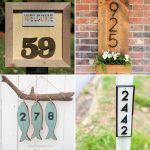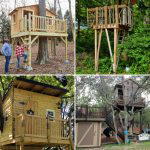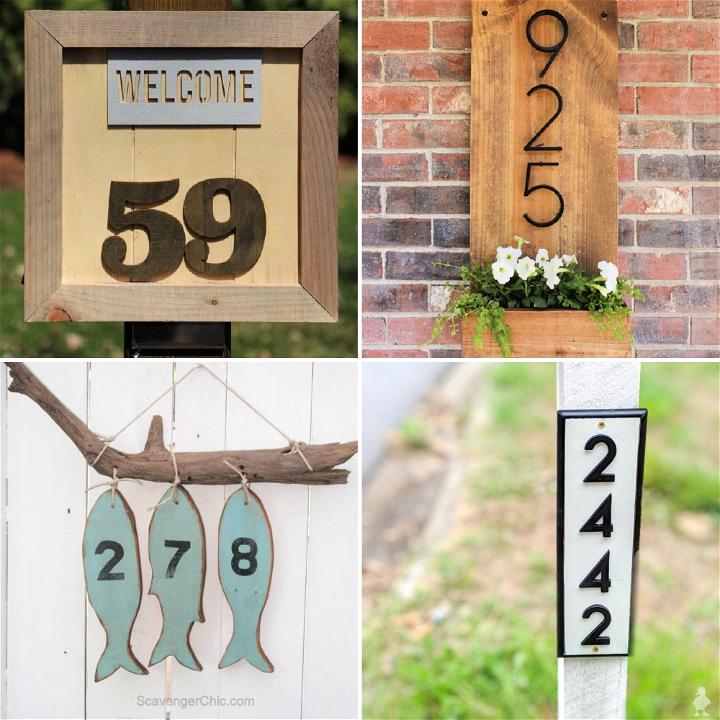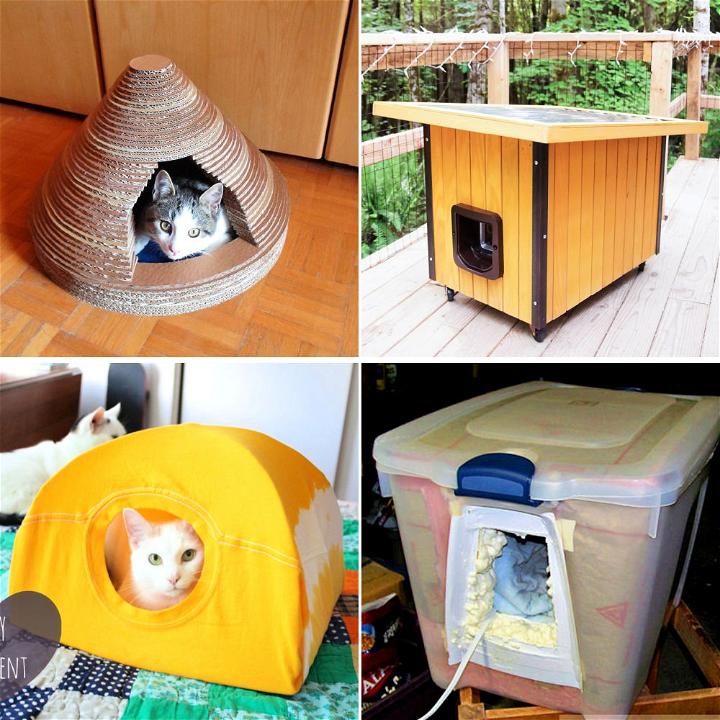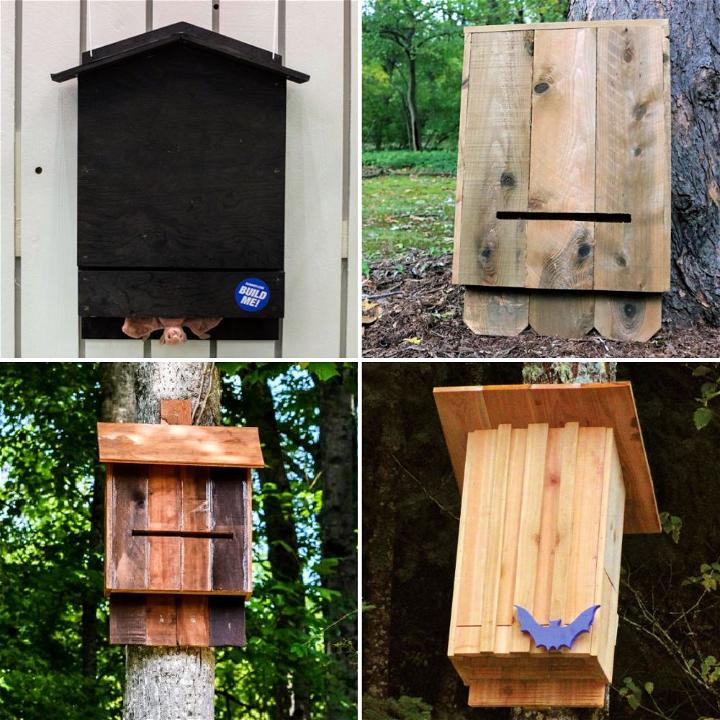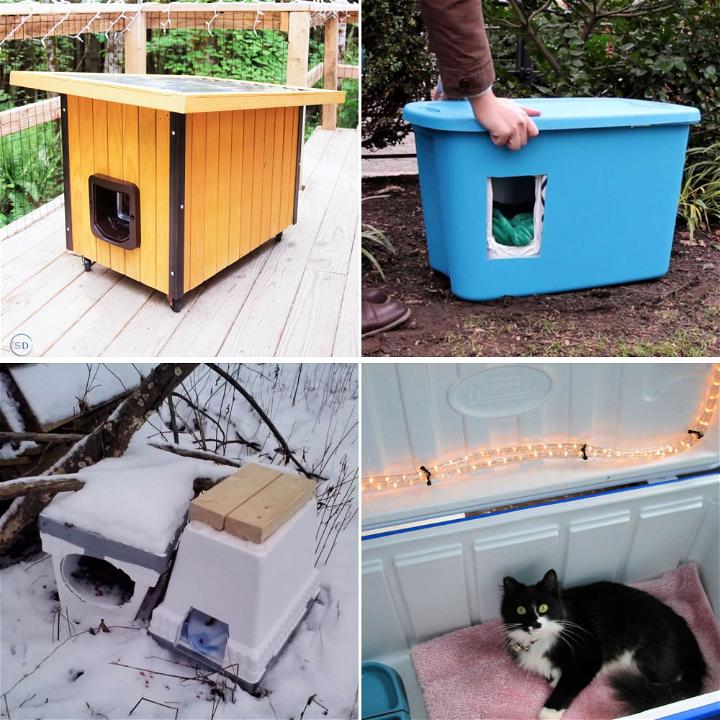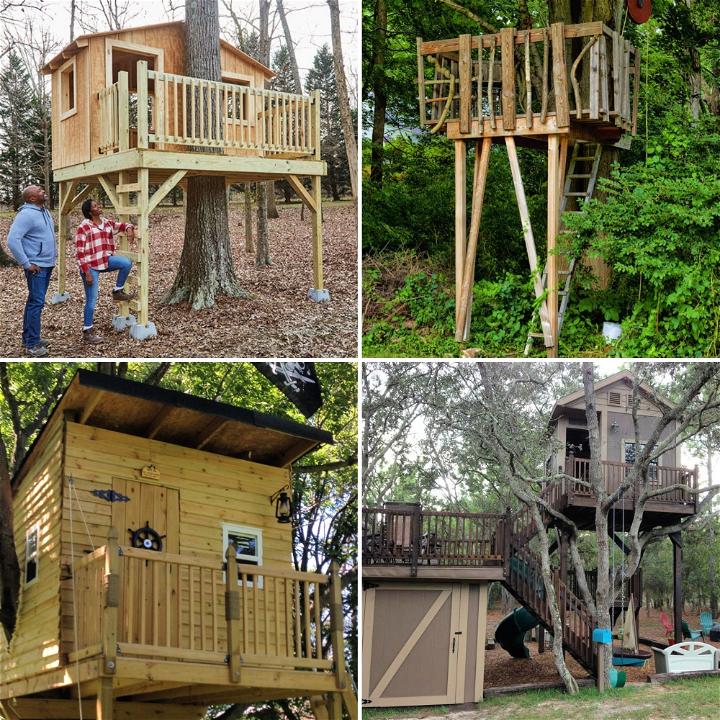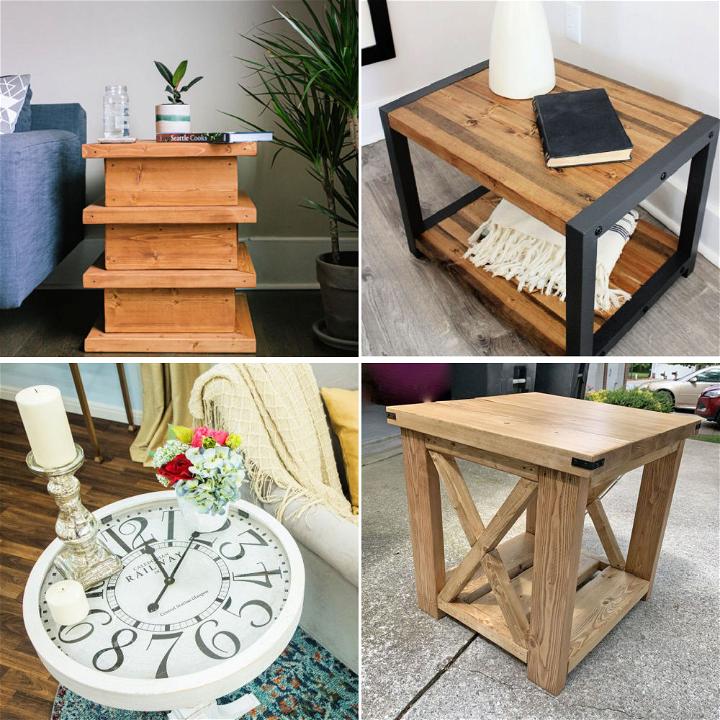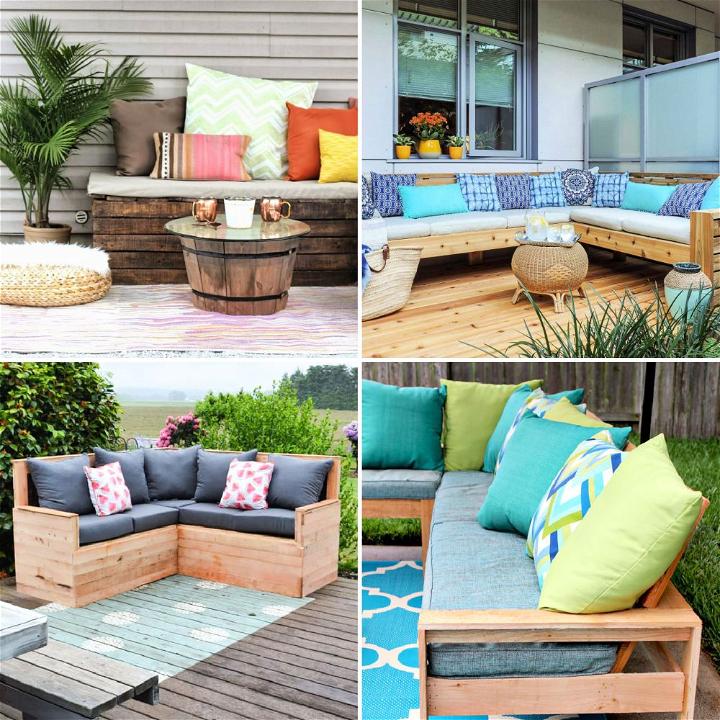Building a metal hoop house, or high tunnel greenhouse, is a rewarding project that can extend your gardening season. This simple design has stood the test of time and proves to be a durable option for gardeners. Following this guide, you will be able to construct a customizable and sturdy hoop house with ease.

Materials Needed
- 2x6 cedar boards (for the foundation)
- 2x2 cedar stakes (for foundation anchoring)
- Metal poles (for the hoops)
- Rebar (for anchoring poles)
- 1x4 treated boards (for connecting hoops)
- Polyethylene plastic sheeting
- C Channel and wiggle wire (for securing plastic)
- UV-resistant tape
Step by Step Instructions
Learn how to extend your growing season with a DIY hoop house. Our guide covers materials, step-by-step instructions, and a video tutorial.
Step 1: Laying the Foundation
- Prepare the Site: Choose a level site for your hoop house. Clear any debris or vegetation.
- Make the Outline: Using 2x6 cedar boards, outline your hoop house's foundation. This build is based on a 12x19 feet frame, but you can adjust based on your needs.
- Anchor with Stakes: Secure the cedar boards with 2x2 cedar stakes at each corner and at intervals along the length to prevent shifting.
Step 2: Bending and Setting the Poles
- Measure and Mark Poles: Before bending, mark each metal pole 9 inches from both ends. This ensures flat ends for better rebar fit and top connection.
- Bending the Poles: Use a pole bender tool to bend each metal pole gently into the hoop shape. Remember not to overbend to avoid kinks.
- Anchoring Poles: Drive rebar stakes into the ground inside the foundation's perimeter. Slide the bent poles over the rebar, ensuring the ends touch the ground.
Step 3: Assembling the Hoops
- Position the Hoops: Once all poles are in place, ensure they are evenly spaced across the foundation.
- Secure at the Top: Connect the top of each hoop using 1x4 treated boards for added stability.
Step 4: Framing Doors and Windows
- Decide on Door and Window Locations: Plan where you want your doors and windows based on ventilation and access needs.
- Frame the Openings: Attach additional lumber to the hoops to frame out your chosen door and window spaces. Use secure fittings to ensure strength.
Step 5: Attaching the Plastic
- Prepare the Hoops: Apply UV-resistant tape over the metal hoops to protect the plastic from wear.
- Secure the Plastic: Attach C Channels and wiggle wire along the front and back hoops. Then, drape the plastic over the structure, securing it along the base with lumber and at the ends with the wiggle wire.
Step 6: Ventilation
- Evaluate Needs: Determine the best ventilation method for your climate. Options include manually opening windows and doors, cutting additional vent openings, or installing a mechanical fan.
Video Tutorial
For a step-by-step video tutorial on building a metal hoop house, watch this instructional video.
It pairs well with this written guide, offering a visual walk-through of each step, making complex processes easier to understand.
Advanced Features for DIY Hoop Houses
Discover the best advanced features for DIY hoop houses, including technology integration and efficiency enhancements, for optimal growing conditions.
Technology Integration
To make your hoop house more efficient, consider integrating technology:
- Automated Watering Systems: These systems can save time and ensure your plants receive the right amount of water.
- Temperature Controls: Installing sensors and controllers can help maintain the optimal climate for your plants.
- Solar Panels: Power your hoop house with renewable energy by installing solar panels. This can run fans, lights, and other equipment.
Enhancing Efficiency
Boost the efficiency of your hoop house with these additions:
- Insulation: Proper insulation can keep the hoop house warm during cold months.
- Shade Cloth: Use a shade cloth to protect plants from intense sun in hot climates.
- Reflective Surfaces: Placing reflective materials inside the hoop house can increase light availability for plants.
Maintenance and Upkeep of Hoop Houses
Learn the essentials of hoop house maintenance. Discover tips on regular checks and seasonal upkeep to ensure lasting productivity and health.
Regular Checks
Perform regular checks to ensure the longevity of your hoop house:
- Inspect the Cover: Look for tears or damage and repair them promptly to maintain the internal environment.
- Check the Structure: Ensure the frame is secure and stable, especially after severe weather.
Seasonal Maintenance
Seasonal maintenance is crucial for the hoop house’s durability:
- Spring: Clean the interior and exterior, check for pests, and prepare the soil.
- Summer: Monitor for overheating and ensure adequate ventilation.
- Fall: Clear any debris and check the structure before winter.
- Winter: Remove snow from the roof and check the integrity of the insulation.
FAQs About DIY Hoop Houses
Discover everything you need to know about DIY hoop houses in this comprehensive FAQ guide. Learn how to build, maintain, and maximize your garden's potential.
What is a hoop house?
A hoop house is a type of greenhouse with a semi-circular frame covered by plastic, creating a controlled environment for plants to grow.
How does a hoop house differ from a greenhouse?
Unlike traditional greenhouses, hoop houses are usually less expensive, have no permanent foundation, and can be moved if necessary.
What materials do I need to build a hoop house?
You’ll need PVC pipes or metal hoops for the frame, durable plastic sheeting for the cover, and anchors to secure it to the ground.
Can I build a hoop house on any type of ground?
Yes, but it’s best to choose a level area with good drainage. Avoid low spots that could collect water.
How do I control the temperature inside a hoop house?
You can control the temperature by rolling up the sides for ventilation, using shade cloth, or installing heaters for colder climates.
What plants grow well in a hoop house?
Most vegetables and flowers that require a warm environment can thrive in a hoop house. It’s ideal for extending the growing season.
How long does the plastic covering last?
The lifespan of the plastic covering depends on the quality, but it typically lasts between 3 to 5 years before needing replacement.
25 DIY Hoop House Plans to Build
Discover 25 DIY hoop house plans for your gardening needs. Easy-to-follow instructions and designs to make your own hoop house.
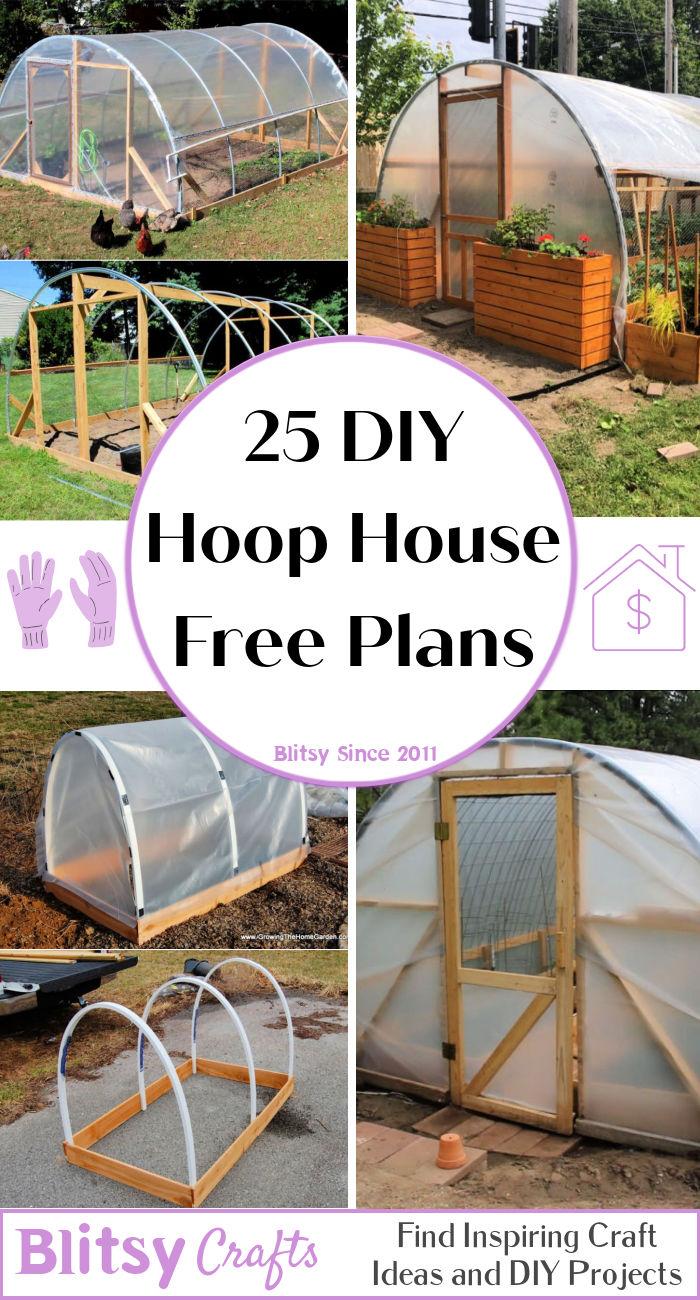
1. Easy DIY Insect Hoop House
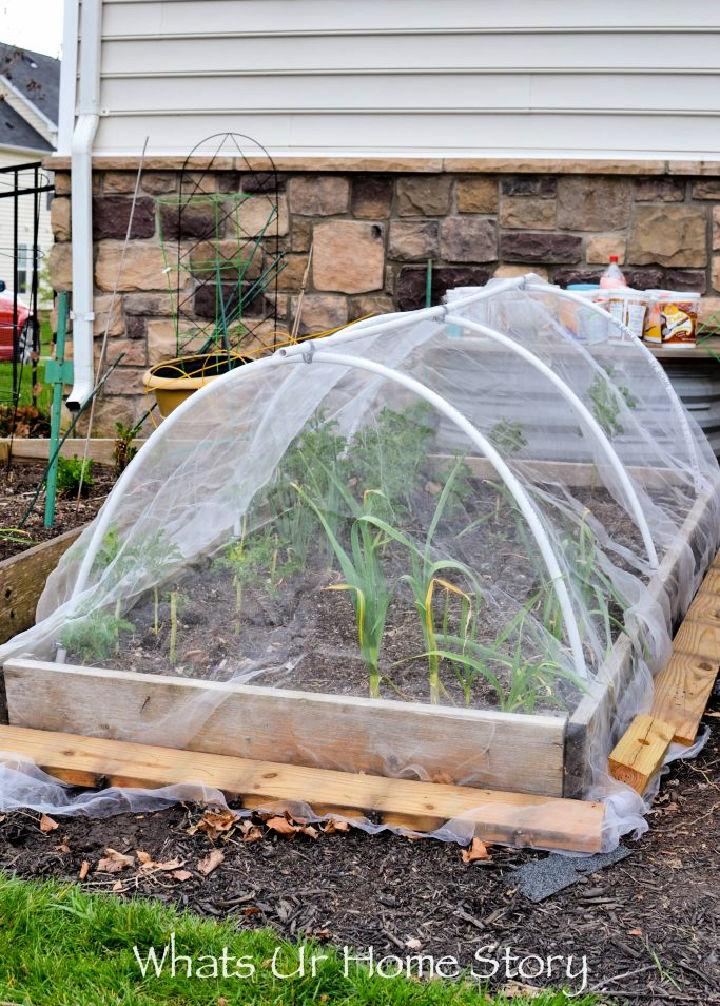
An insect-proof hoop house can safeguard your plants from pests, ensuring healthier growth. Its simplicity reinforces accessibility, offering a protective barrier with minimal fuss or cost. Ideal for gardeners seeking a straightforward, effective solution.
2. Simple Hoop Houses To Grow Lettuce
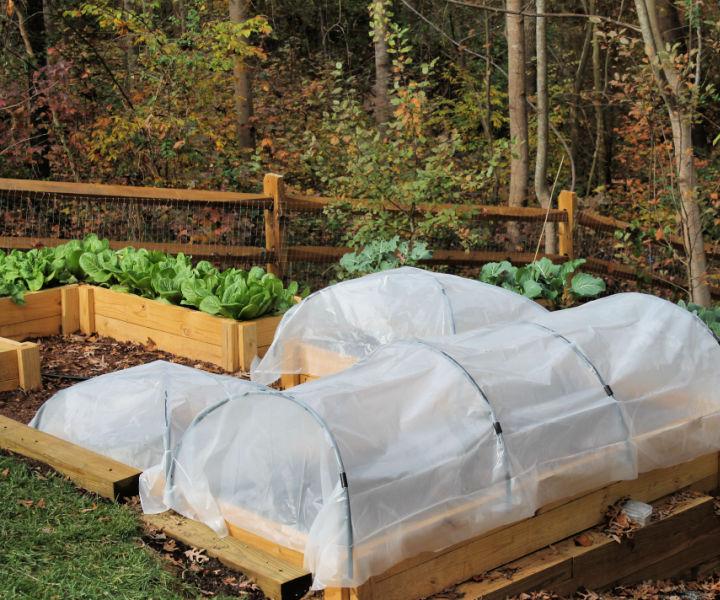
Cultivating lettuce under a hoop house can extend your growing season. These structures offer a cozy microclimate, shielding your greens from harsh weather while capturing essential sunlight. It's a crisp, fresh approach to gardening.
3. DIY Hinged Hoop House
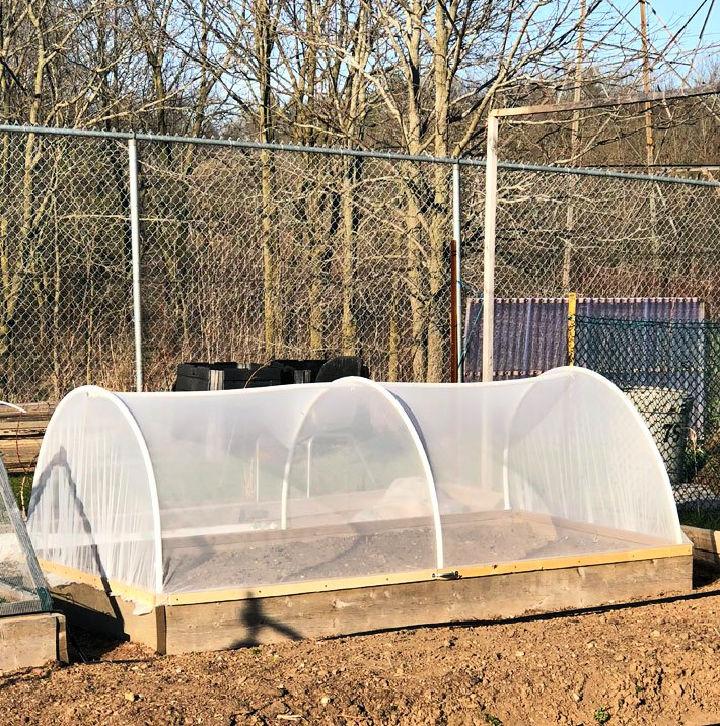
A hinged hoop house introduces versatility to your garden, allowing easy access to your crops. This simple design facilitates maintenance tasks and harvesting, blending convenience with the inherent protection of a traditional hoop house.
4. Building a Hoop House in a Vegetable Garden
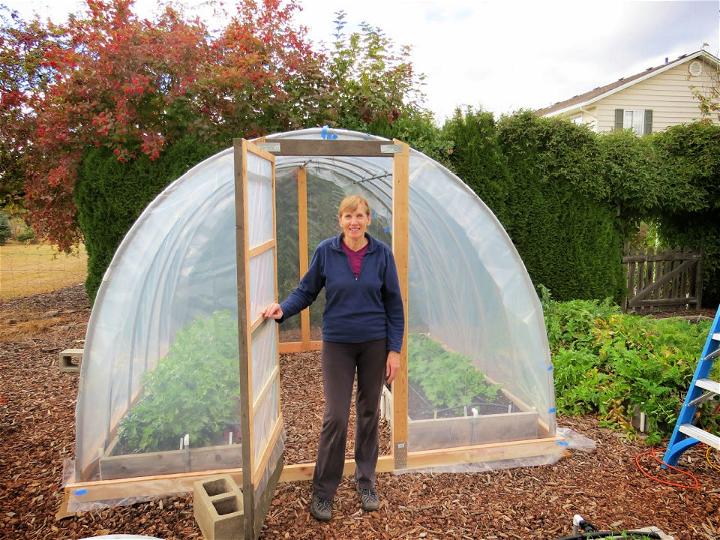
Erecting a hoop house among your veggies can boost their growth, igniting an ecosystem that thrives throughout the year. It's a nurturing haven for your garden, enhancing sustainability and yield.
5. Hoop Greenhouse Out of PVC Pipe
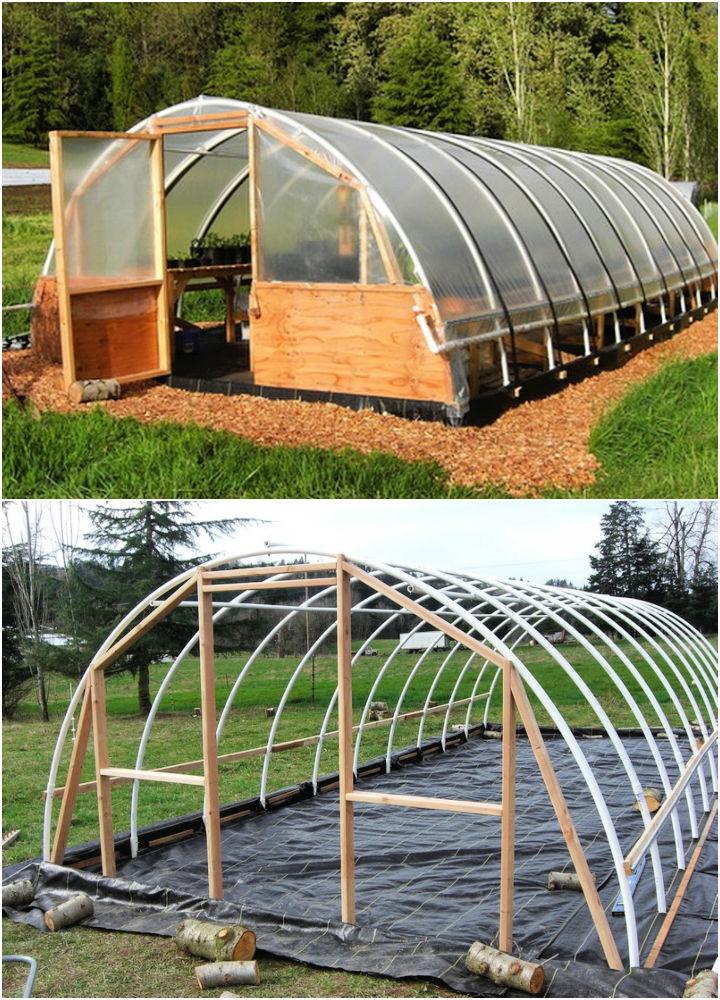
Making a greenhouse from PVC pipes presents a cost-effective, resilient solution to year-round gardening. Its flexibility and durability make it a popular choice for gardeners keen on cultivating a variety of plants in controlled conditions.
6. Hinged Hoop House for Raised Bed
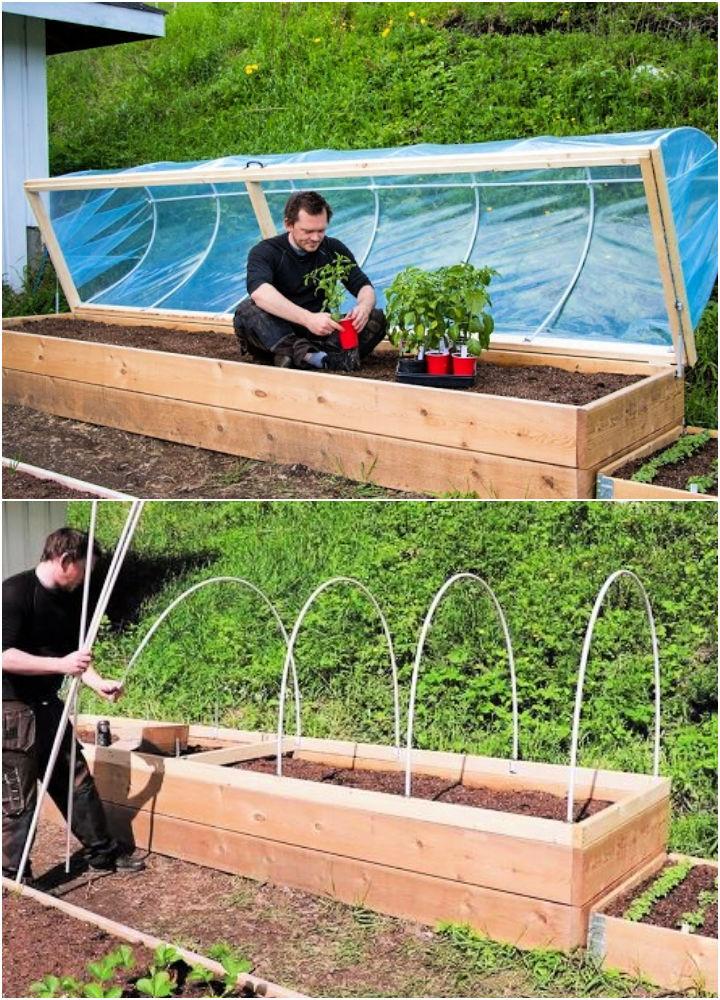
Tailoring a hinged hoop house to your raised bed magnifies its benefits, optimizing conditions for specialized crops. It integrates seamlessly, encouraging lush growth within this elevated environment.
7. How to Build a Hoop House
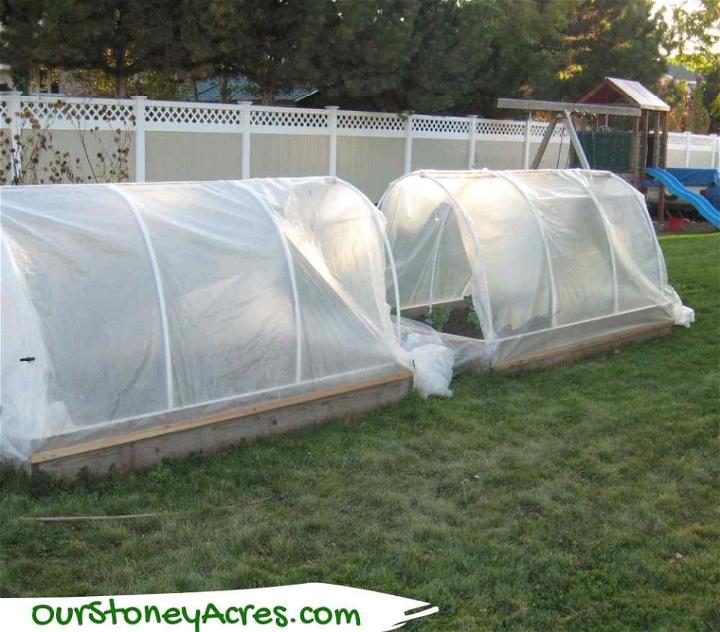
Building a hoop house can be a rewarding project that enriches your garden's diversity. It's about creating a microclimate where your plants can flourish, protected from the elements and pests, fostering a resilient gardening practice.
8. Hoop House with Wood and Steel Pipe

Combining wood and steel pipes for your hoop house frames its strength and longevity. This sturdy construction withstands adverse weather, securing a reliable shelter for your plants throughout their cycles.
9. DIY Mini Hoop House
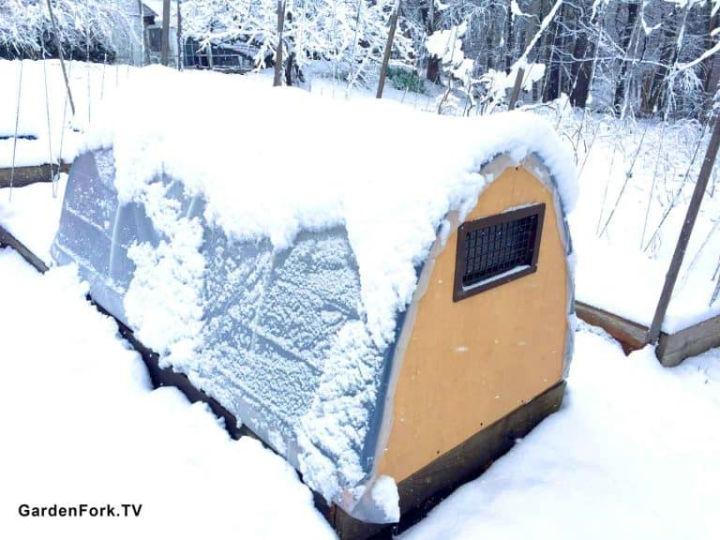
A mini hoop house is perfect for small-scale gardeners or those with limited space. It offers the same benefits of temperature and moisture control but in a compact, manageable size. An adorable, efficient upgrade to your gardening regimen.
10. Build a Small Hoop House
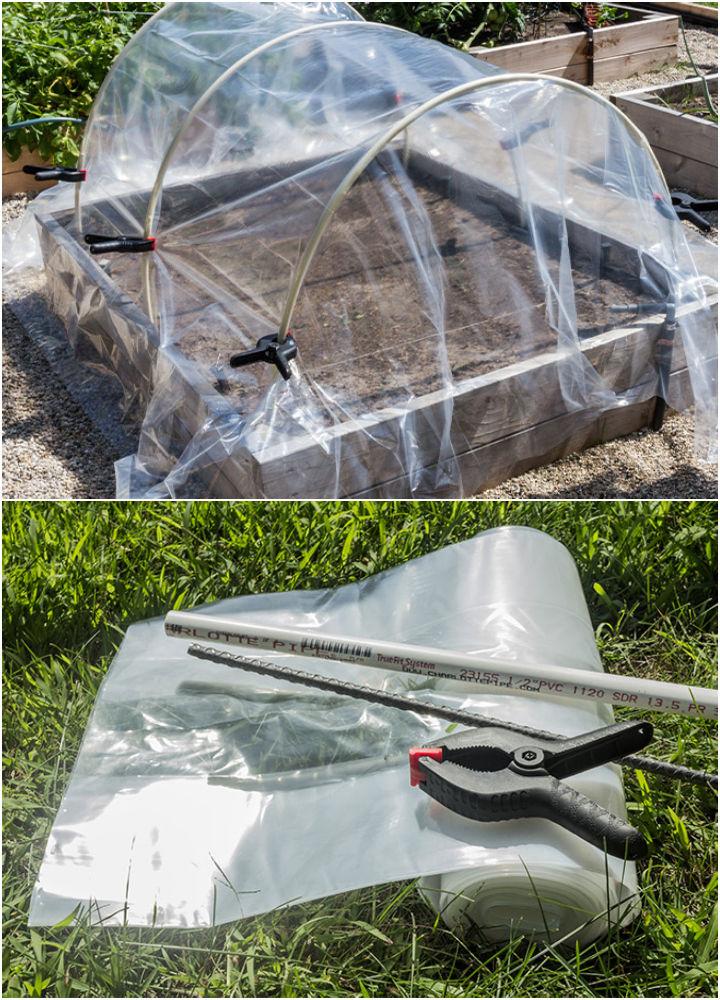
Constructing a small hoop house can be a game changer for your garden, presenting an easily achievable project with a big impact. It invites an innovative approach to protecting and nurturing your garden, no matter its size.
11. How to Make a Hoop House
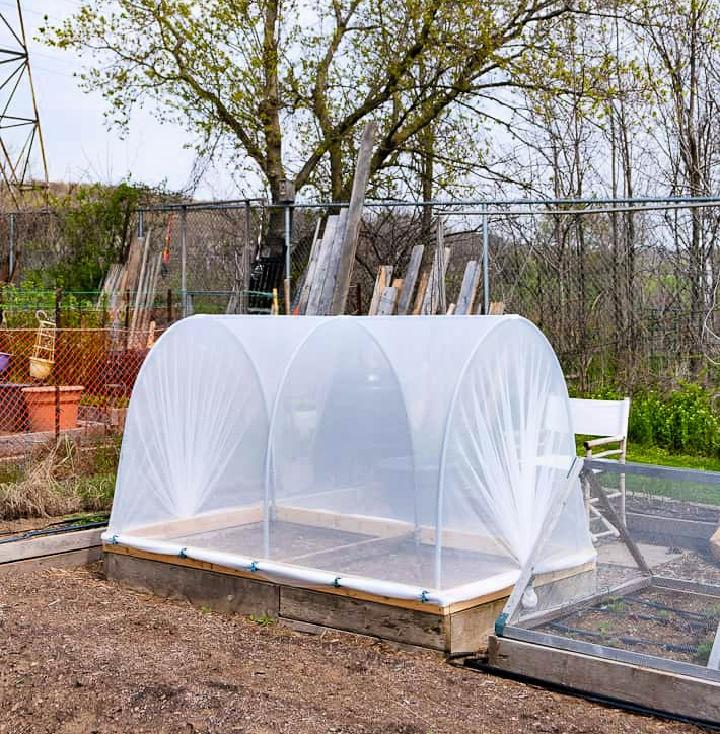
Ever wanted a year-round garden? Building a hoop house might just be the answer. Essentially a tunnel of plastic sheeting, it’s a simple, affordable way to extend your growing season. Get ready to enjoy fresh veggies beyond the typical seasons!
12. Hoop House Greenhouse Design
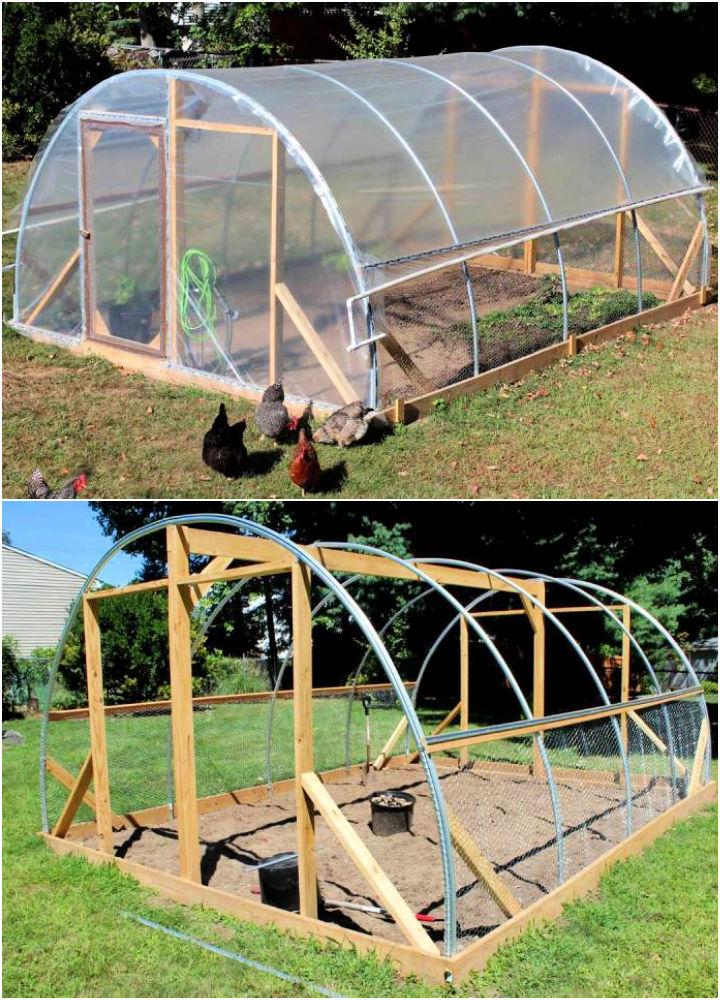
Imagine starting your seedlings early in a cozy, controlled environment. A hoop house greenhouse is precisely what you need. Its curved design optimizes sunlight exposure, making it a sanctuary for plants. It's your first step towards self-sufficiency!
13. DIY Hoop House for Under $75
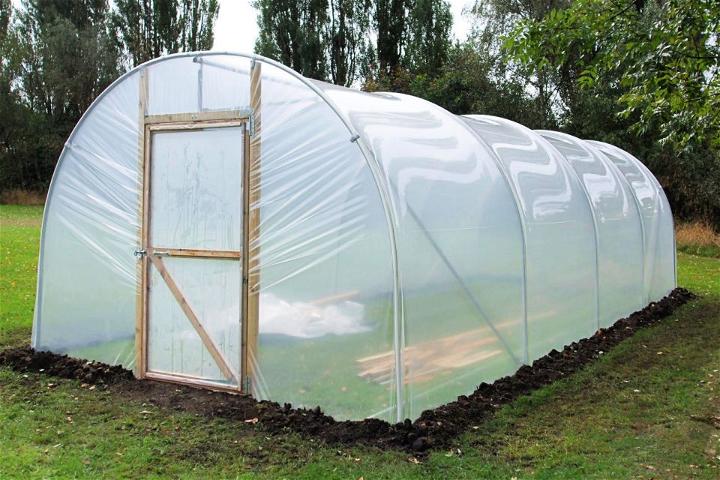
Yes, you read that right. With some PVC pipes, plastic sheeting, and a weekend’s worth of work, you can have your very own greenhouse. Economical and efficient, this low-cost solution is perfect for gardeners on a budget keen to protect their plants from the elements.
14. Hoop Style Greenhouse Plan
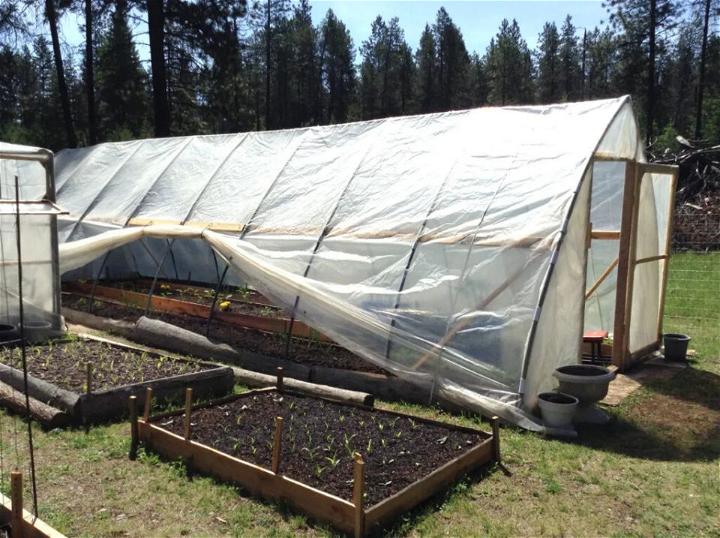
Dreaming of an easy-to-assemble greenhouse? The hoop style is your go-to. Its sleek, semi-circular shape minimizes wind resistance while providing ample headroom and plant space. Perfect for those looking to dip their toes into greenhouse gardening without overwhelming commitment.
15. DIY Little Hoop House on Prairie
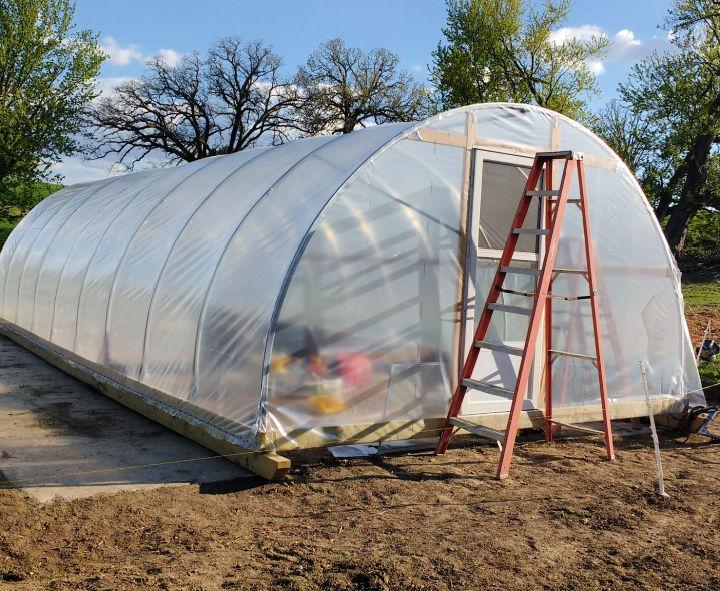
Don't let limited space deter your gardening dreams. A small hoop house, fitting snugly over raised garden beds, can boost your urban garden's productivity. It's a tiny yet mighty solution for extending growing seasons and protecting delicate plants.
16. Build Your Own Hoop House

Roll up your sleeves and make a haven for your plants. Building your own hoop house is not just rewarding; it’s a customizable project to meet your garden’s unique needs. From materials to size, you call the shots, ensuring your green friends thrive.
17. Homemade Hoop House for Garden
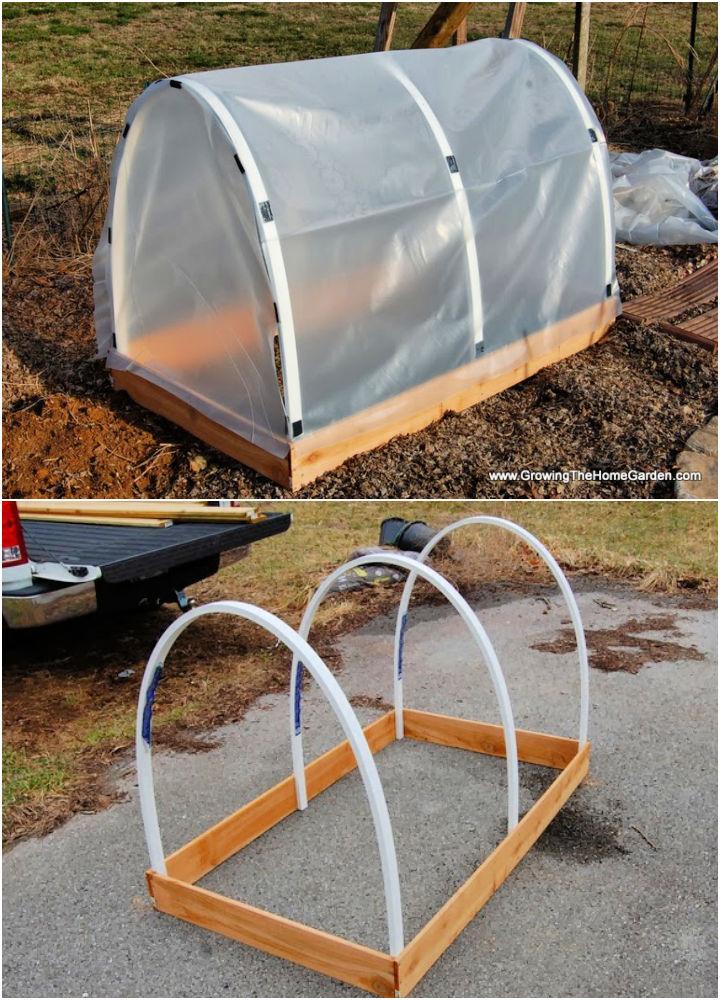
Transform your garden into a resilient, productive space with a homemade hoop house. This simple structure can shield your plants from frost, pests, and direct sunlight, all the while keeping them snug and warm. It's gardening made smarter, not harder.
18. Cheap Cattle Panel Hoop House
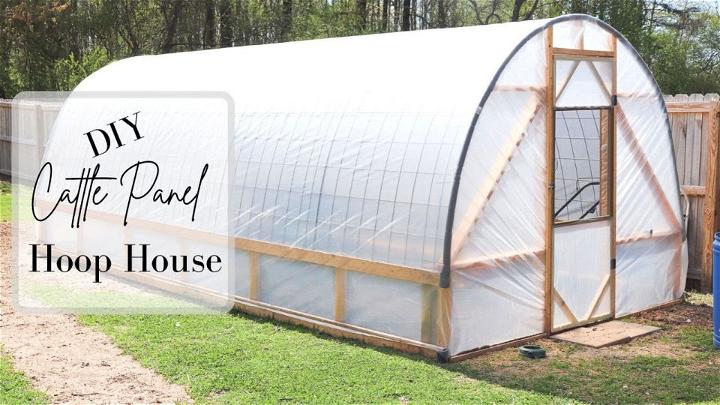
Who knew cattle panels could be so versatile? Bend them into arcs, cover them with plastic, and voilà – an incredibly sturdy, wind-resistant hoop house emerges. An excellent choice for those seeking durability without digging deep into their pockets.
19. Best DIY Retractable Hoop House
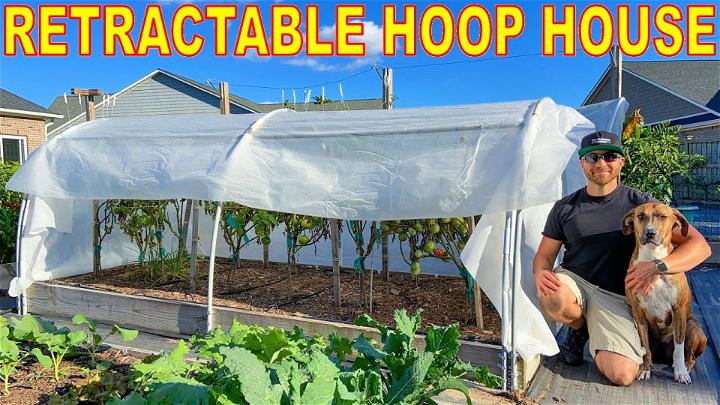
Elevate your gardening game with a retractable hoop house. This ingenious design allows for easy climate control, giving you the flexibility to protect your plants or let them bask in the sun. It's a game-changer for those who love precision in their gardening pursuits.
20. Build a Hinged Hoop House
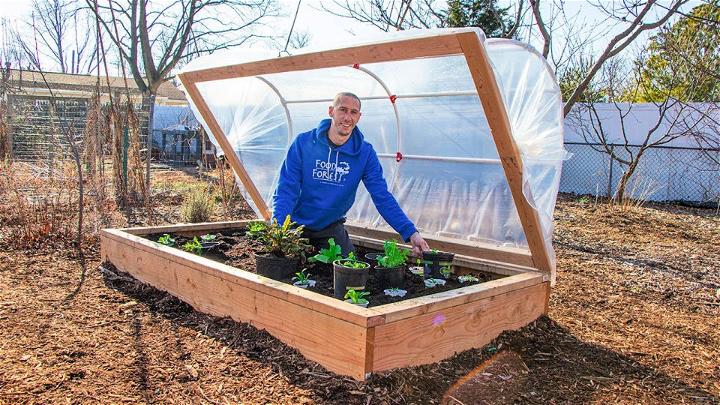
A hinged hoop house offers the ultimate convenience. With doors and windows that open, managing temperature and humidity is a breeze. Plus, it makes accessing your plants for watering and harvesting an effortless affair. A smart choice for gardeners who value both functionality and ease.
21. Smart Heated Hinged Hoop House

Ever dreamt of a garden that thrives year-round? Enter the smart heated hinged hoop house. It intelligently monitors temperature, providing warmth during chilly spells. Its hinged design makes plant care a breeze. A perfect blend of innovation and practicality for passionate gardeners.
22. DIY 24x14 Ft Hoop House
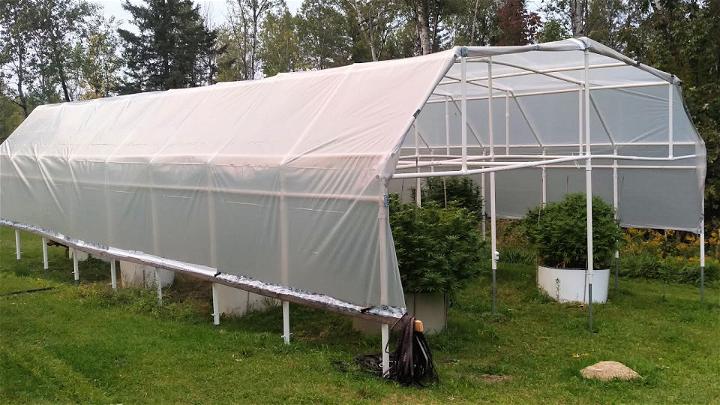
Imagine maximizing your growing season with a spacious 24x14 Ft hoop house. It's a rewarding weekend project that extends your gardening realm. Offering ample space, it supports a wide variety of plants. A gardener's delight, it brings dreams of abundant harvests closer to reality.
23. Inexpensive DIY Hoop House
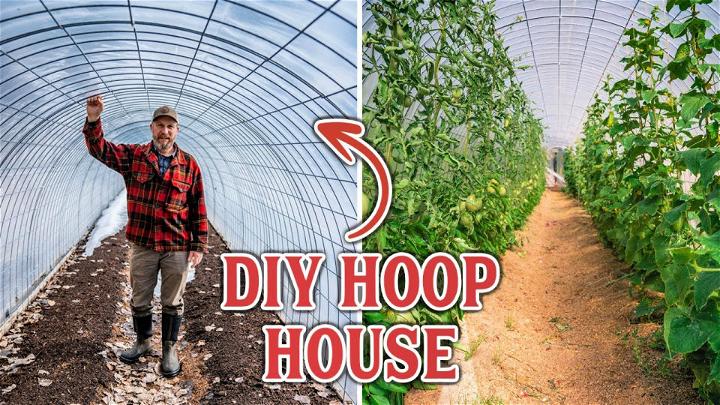
No need to break the bank for a flourishing garden. The Inexpensive DIY hoop house offers a cost-effective shelter for plants. With a few materials and some creativity, you protect your greens from harsh conditions. It's an ideal solution for gardeners seeking value and efficiency.
24. Sturdy Hoop House - Step-by-Step Instructions
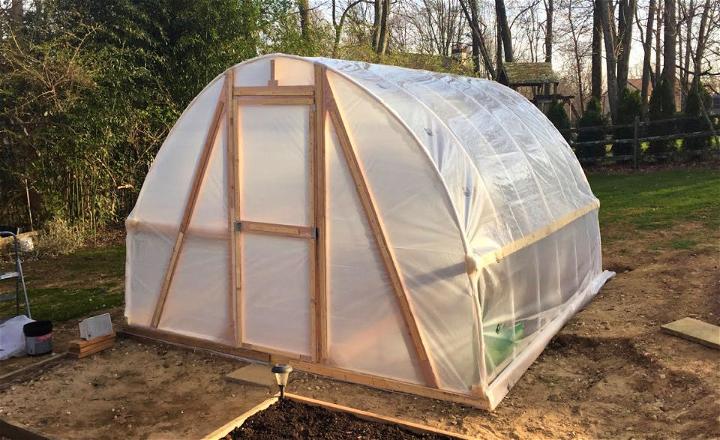
For those who value durability, this sturdy hoop house comes with clear, step-by-step instructions. Its robust design withstands the elements, ensuring your plants stay safe. This guide makes building a resilient garden shelter accessible to everyone. A foolproof choice for enduring gardening success.
25. Build a10x20 Foot Hoop House
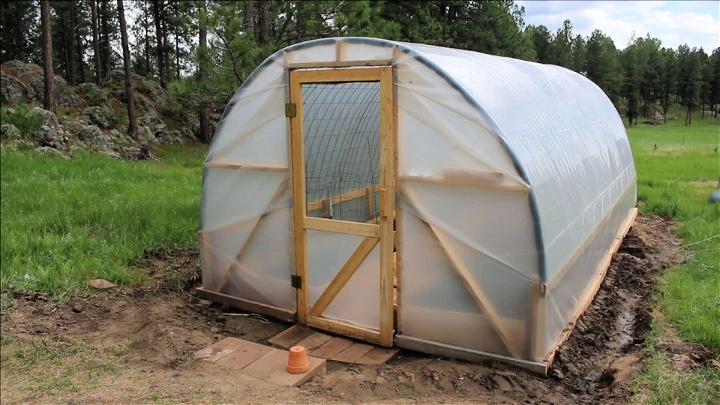
Building a 10x20-foot hoop house transforms your gardening experience, offering ample space for a diverse plant collection. This sizeable structure provides extended growing seasons and protects against unpredictable weather. It's an inviting project for those looking to elevate their gardening game.
Conclusion:
In conclusion, building a DIY hoop house can be a rewarding and cost-effective project for any gardener. With the right materials and a little bit of elbow grease, you can make a functional and efficient space for extending your growing season. Whether you're a beginner or an experienced gardener, this project offers numerous benefits for your garden and your wallet. Start your DIY hoop house today and enjoy the rewards!

